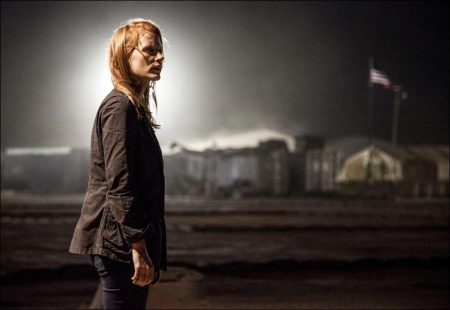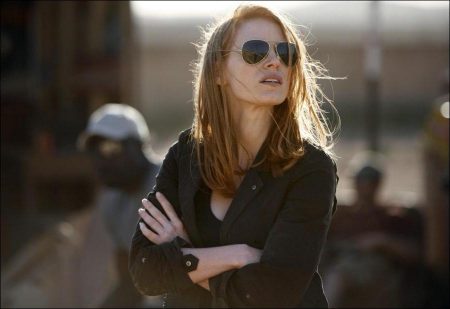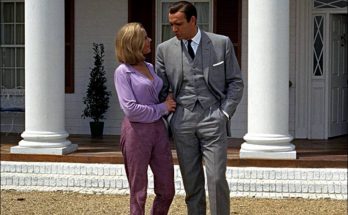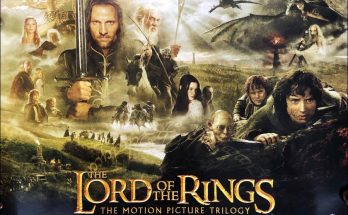Zero Dark Thirty Notes: The Illusion of Reality. The hunt for Osama bin Laden preoccupied the world and two American presidential administrations for more than a decade. But in the end, it took a small, dedicated team of CIA operatives to track him down. Every aspect of their mission was shrouded in secrecy.
Though some of the details have since been made public, many of the most significant parts of the intelligence operation––including the central role played by that team––are brought to the screen for the first time in a nuanced and gripping new film by the Oscar-winning creative duo of Kathryn Bigelow and Mark Boal.
Their account of bin Laden’s pursuit and capture, vivid yet faithful to the facts, takes the viewer inside the hubs of power and to the front lines of this historic mission, culminating in the special operations assault on a mysterious, suburban Pakistani compound.
But it is the lead-up to the raid that truly distinguishes Zero Dark Thirty from other accounts. The quest to find bin Laden was fraught with danger from the start, and not every U.S. operative survived. Some intelligence experts came to believe that the assignment was impossible to carry out, but on the ground a determined team of analysts and interrogators defied the odds and proved them wrong. For the first time, their struggle to find Osama bin Laden is told on the screen in electrifying detail.
“I wanted to create an environment that would never feel artificial, but also captures the exoticism and force of the story with as much striking imagery as possible,” says Kathryn Bigelow. “So it ends up being planned to within an inch of its life, but hopefully it appears unplanned, or even ‘found’… Naturalism takes a lot of work.”
In the first place, for Bigelow, part of the work was tackled on a managerial level with a plan to mesh the camera department with the art department, in order to merge the two fields into an integrated whole. Set design and dressing were also conceived and coordinated, she says, “in absolute lock-step with camera.”
Bigelow chose a cinematographer, Greig Fraser (Snow White and The Huntsman, LetMe In, Bright Star) and a production designer, Jeremy Hindle (making his feature film debut), who were not only former colleagues but also close personal friends. “They’re both masters,” says Bigelow. “They work so closely together that they can finish each other’s sentences, and all that adds up to help create a unified aesthetic.”
“I know Greig loves reflective surfaces,” says Hindle, “So I’d look for opportunities, especially in the low light work, to give the photography a little kick.”
The result is a camera that is alive and immersive, hand-held, which creates an intimacy and rough-hewn quality. “Every time there was a shot that looked like it was a reference to another movie, Greig and I would look at each other and say, ‘Oh God, we shouldn’t do that,’ so we’d change it to look a little less familiar, and strip it back to be as bare and natural as possible.”
From the get-go, Fraser was intrigued by the challenges of Zero Dark Thirty. “Photographically, one of the most appealing things about this story is that you are taking the audience into worlds they don’t really know. From the CIA offices in Washington to the streets of Pakistan to bin Laden’s compound, you have a lot of natural contrasts and myriad looks that take the audience on a real journey.”
Those contrasts become another entree into Maya’s day-to-day reality. “She is going back and forth from the clean, white light and clarity of CIA offices to the smoggy, colorful haze of being outside and on the streets,” observes Bigelow.
Bigelow and Fraser decided early on to shoot the film with the ARRI ALEXA digital cameras. “It was a very specific decision, driven in part by the need to capture the low light of the raid in Abbottabad,” explains Bigelow. “The cameras are wonderfully sensitive to light, so we were able to utilize the softest, dimmest light source possible, allowing us to more accurately simulate a moonless night…”
“In Greig’s hands, and with the specific lenses he chose, the ALEXA gives you a unique texture that is neither like film, nor really what you would expect from digital,” says Bigelow. “It’s not perfectly clean, it’s faintly granular, and yet has a color latitude that can create a very dense, saturated, lush, image.”
Views: 81




